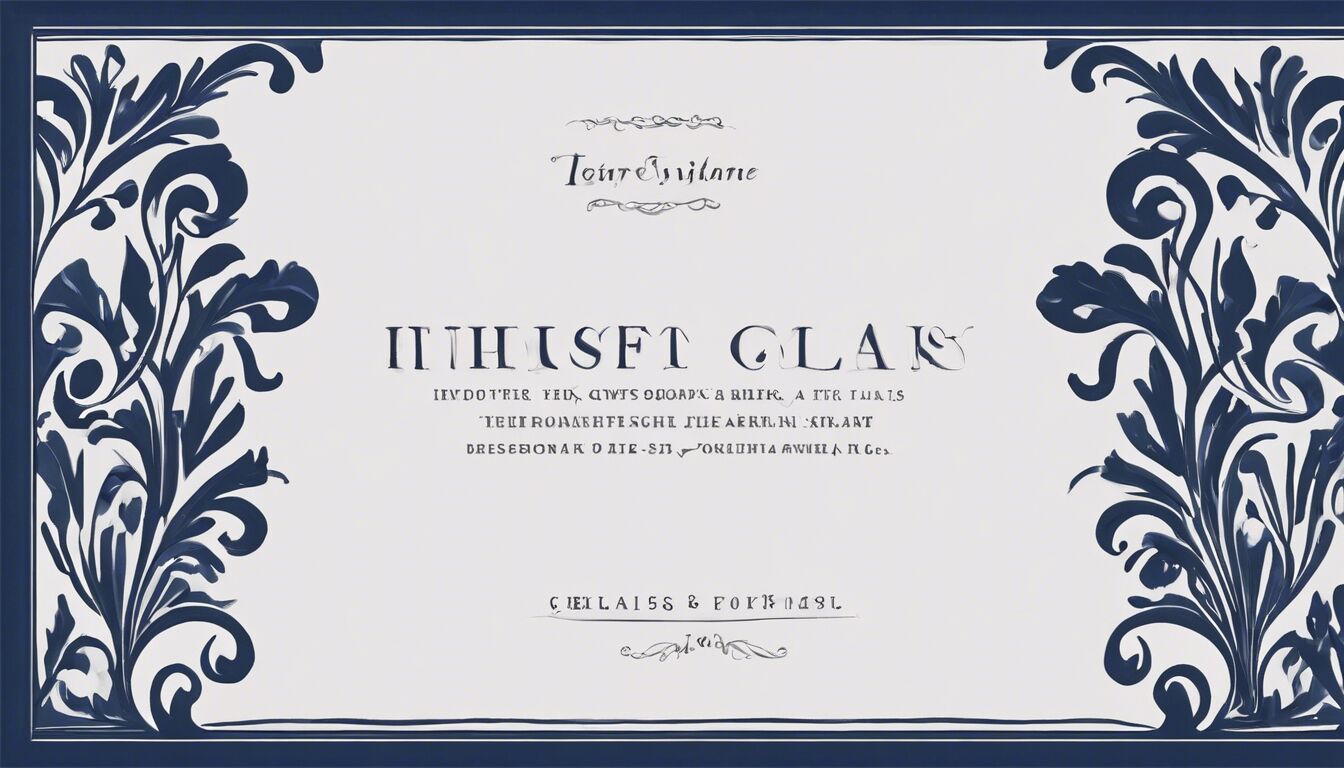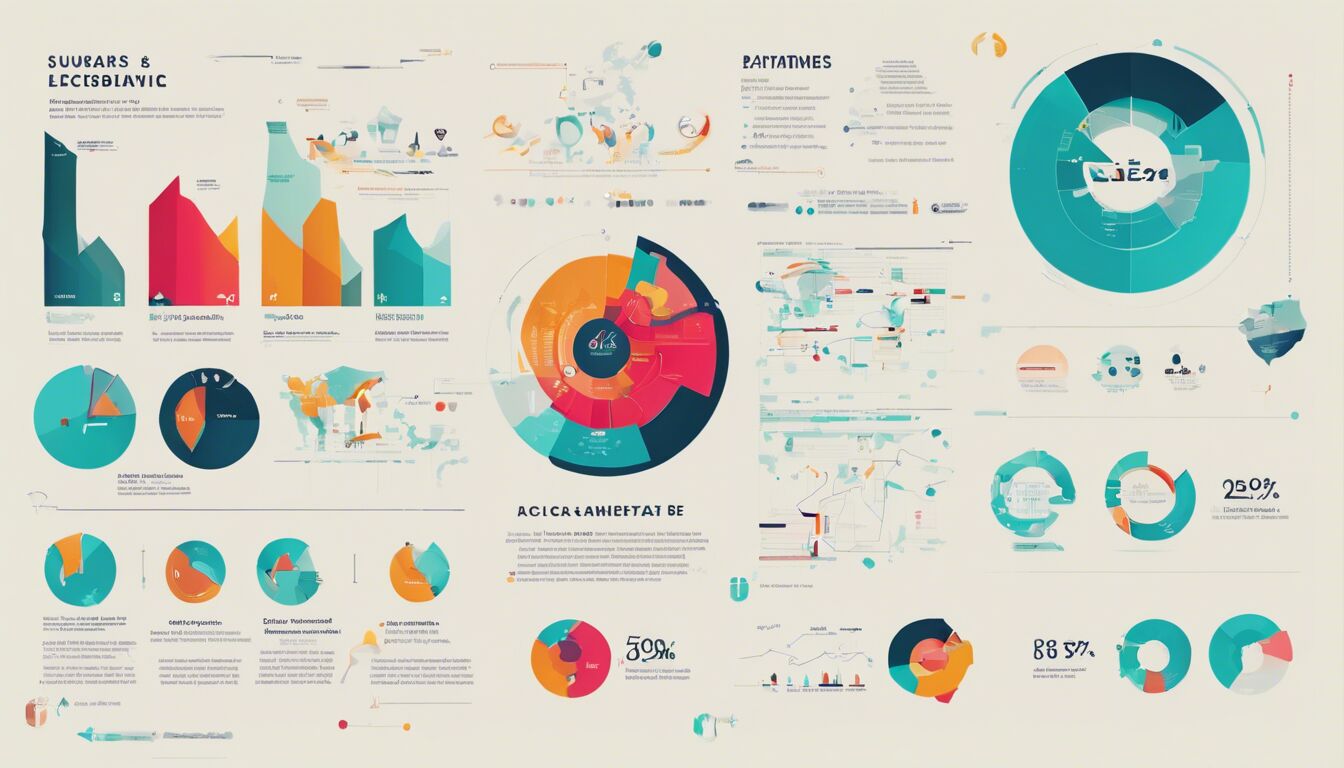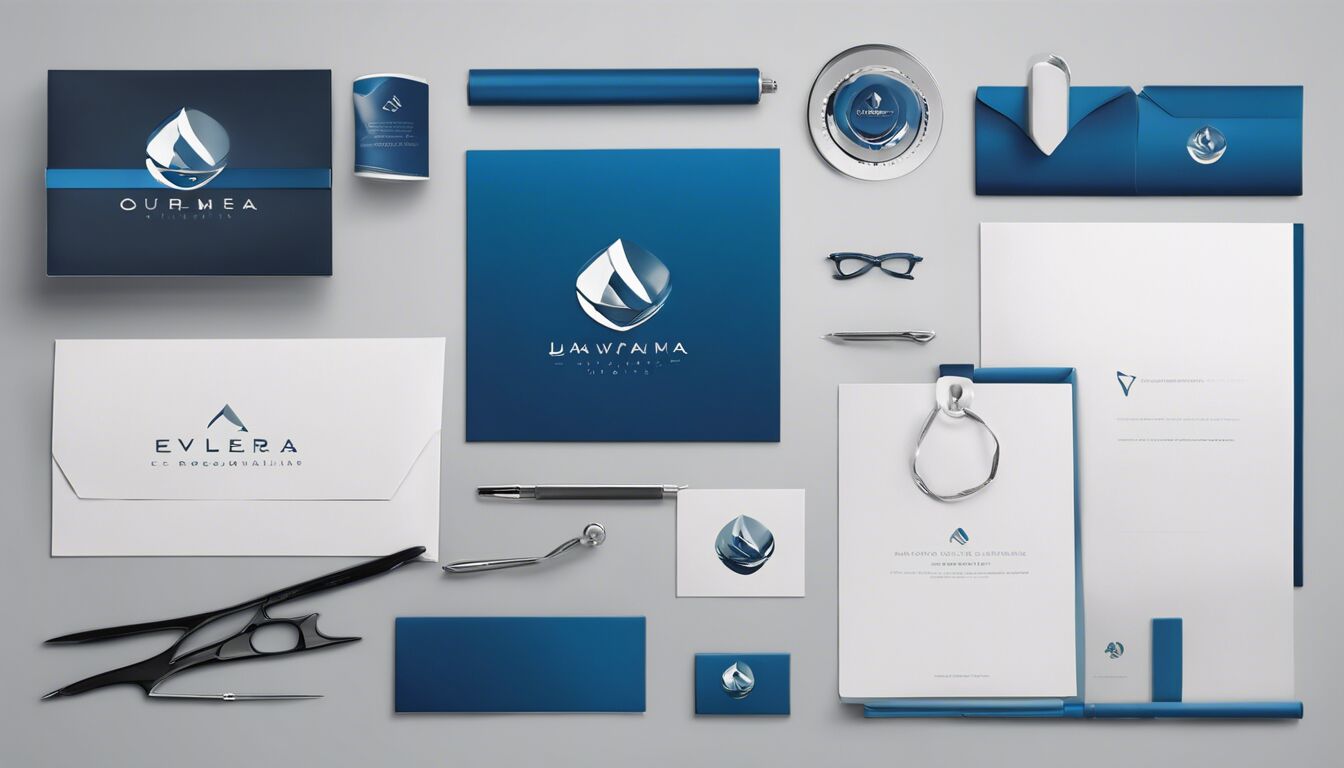blog
Visual Elements That Attract Readers
Color plays a critical role in visual design, as it has the ability to evoke emotions and influence perceptions instantly. In fact, certain colors are known to stimulate psychological responses that can either attract or repel readers. Understanding the emotional impact of various colors can help designers make more informed choices to enhance their content. For example, blue often conveys trust and calmness, making it an ideal choice for corporate websites and professional services. On the other hand, red can generate excitement and urgency, which works well for promotional materials and call-to-action buttons.
Complementary color schemes, where colors opposite each other on the color wheel are paired together, can create visually striking contrasts that draw the eye. Alternatively, analogous color schemes, which use colors next to each other on the color wheel, can produce a more harmonious and pleasing effect. The careful selection and combination of colors not only improve aesthetics but also enhance readability and user engagement.
Studies show that color increases brand recognition by up to 80%, underscoring its importance in creating a memorable visual identity. Integrating a consistent color palette across all elements of a website or publication can help create a cohesive look and feel, making content more approachable and engaging for readers. As Pablo Picasso famously said, “Colors, like features, follow the changes of the emotions.”
The impact of images
 Visual elements hold significant power, but none may be more impactful than the use of images. In visual design, images serve as an immediate focal point that can captivate and hold the reader’s attention. High-quality images contribute not only to aesthetic appeal but also to the overall comprehension and retention of the content. They can convey complex ideas quickly, far better than text alone. This is particularly crucial in an age where readers often skim through content.
Visual elements hold significant power, but none may be more impactful than the use of images. In visual design, images serve as an immediate focal point that can captivate and hold the reader’s attention. High-quality images contribute not only to aesthetic appeal but also to the overall comprehension and retention of the content. They can convey complex ideas quickly, far better than text alone. This is particularly crucial in an age where readers often skim through content.
Research shows that articles with relevant images get 94% more total views than those without. When selected carefully, images can evoke emotions and relate closely to the content, thereby making the information more relatable and persuasive. For example, a well-placed photograph or illustration can break up long blocks of text, making an article more digestible and less daunting for readers to engage with.
However, the quality and relevance of the images cannot be overstated. Using poor-quality, irrelevant, or generic stock photos can actually detract from the content’s effectiveness. High-resolution, contextually appropriate, and original images resonate more deeply with the audience, adding an extra layer of credibility and authenticity to the material.
Visual metaphors are another powerful tool. Just as literary metaphors compare two unlike things to deepen understanding, visual metaphors use imagery to enhance comprehension and convey deeper meanings. For example, an image of a labyrinth could symbolize a complex decision-making process, instantly implanting the concept in the reader’s mind without the need for lengthy explanations.
One of the key aspects of using images effectively in visual design is ensuring they align with the brand’s identity. Consistent use of image styles, colors, and themes contributes to a cohesive visual narrative that reinforces brand recognition. This consistency helps in building a familiar and reliable visual language that audiences can easily identify and trust.
One famous proponent of the importance of visual storytelling, John Berger, emphasized, “Seeing comes before words. The child looks and recognizes before it can speak.” This underlines the intrinsic human preference for visual information, and why optimizing image use in content strategies is essential for engagement and comprehension.
Employing images strategically is not just about beautifying a page. It involves careful planning and thoughtful integration into the design to enhance the overall user experience. Ultimately, a well-selected image not only attracts but also retains readers, encouraging them to explore and engage with the content more deeply.
Using typography effectively

Typography serves as a crucial element in visual design, not merely because it affects readability but also due to its profound influence on the overall perception of the content. The choice of fonts, their size, spacing, and the way they are arranged can convey different moods and tones. For instance, serif fonts like Times New Roman evoke a sense of tradition and reliability, making them suitable for academic or formal publications. In contrast, sans-serif fonts such as Arial or Helvetica provide a modern and clean look, ideal for digital platforms and contemporary brands.
When selecting fonts, it is important to consider readability, especially on digital screens. Fonts that are too ornate or complex may look appealing but can deter readers if they are hard to decipher. Clear, legible typography ensures that the content is accessible to a wider audience, including those with visual impairments. Implementing a hierarchy in typography—using different fonts, sizes, and weights for headings, subheadings, and body text—can guide readers through the content seamlessly, emphasizing key points and enhancing overall comprehension.
Kerning, the space between individual letters, and leading, the space between lines of text, are equally pivotal. Proper spacing allows the text to breathe, making it easier on the eyes and more inviting to read. Overly cramped or excessively spaced text can disrupt the reader’s flow and reduce engagement. Thoughtful adjustments in kerning and leading can transform a block of text from overwhelming to approachable.
Additionally, the alignment of text can impact the readability and aesthetic appeal of the design. Left-aligned text is generally easiest to read and is commonly used for body text, while center-aligned text can draw attention and is often employed for titles or quotes. Consistent alignment across the design maintains a clean and organized appearance, preventing visual clutter that could distract or confuse the reader.
Emphasizing key elements through typographic contrast—such as boldness, italics, and different colors—can direct the reader’s attention to the most important parts of the content. However, it is essential to use these techniques sparingly to avoid overwhelming the reader and diluting the impact of the emphasis.
Moreover, the cultural context of typography should not be overlooked. Different cultures may have varying preferences and connotations associated with certain typefaces. Understanding these subtleties can enhance the effectiveness of the design in different cultural contexts, making the content more relatable and impactful.
Integrating typography effectively into visual design involves a balanced approach that combines aesthetic appeal with functionality. By thoughtfully choosing and arranging typefaces, designers can create a harmonious and engaging reading experience that attracts and retains readers. This meticulous attention to typography not only enriches the visual appeal but also reinforces the overall message and identity of the content.
The role of whitespace
Whitespace, often referred to as negative space, is an essential component of visual design, playing a critical role in enhancing readability and overall aesthetic appeal. While it may seem counterintuitive, the strategic use of empty space around text, images, and other elements can make a significant impact on how users interact with and perceive content.
Firstly, whitespace improves readability by reducing cognitive load. When too much information is crammed into a small area, the brain struggles to process it efficiently, leading to discomfort and disengagement. By introducing ample whitespace, designers can help guide the reader’s eye smoothly across the page, making the content easier to absorb. This technique can be particularly effective in breaking up large blocks of text, thereby preventing the reader from feeling overwhelmed and encouraging prolonged engagement.
Moreover, whitespace creates a sense of elegance and simplicity, which can elevate the perceived quality of the content. Minimalist designs, which rely heavily on whitespace, are often associated with modernity and sophistication. These designs strip away the unnecessary elements, allowing the core message to shine through without distraction. For example, luxury brands frequently use extensive whitespace in their branding and marketing materials to convey a sense of exclusivity and high quality.
Another critical aspect of whitespace is its ability to enhance focus. By surrounding key elements with sufficient space, designers can emphasize those elements and draw the reader’s attention to them. This is particularly useful for call-to-action buttons or important information that needs to stand out. When a key element is isolated, free from visual clutter, it becomes a focal point that naturally attracts the reader’s eye.
Whitespace also plays a vital role in organizing information logically and coherently. It can be used to create visual hierarchies, distinguishing between primary and secondary elements within the design. By separating different sections with whitespace, designers can create clear divisions that help readers understand the structure and flow of the content. This organization not only enhances clarity but also improves the overall user experience.
In digital design, whitespace is indispensable for creating responsive and adaptive layouts. With various devices and screen sizes in mind, flexible use of whitespace ensures that content remains easily readable and visually appealing, regardless of how it is accessed. This adaptability is crucial for maintaining consistency and coherence in a multi-platform digital landscape.
It’s essential, however, to understand that whitespace isn’t merely an empty void. It serves a purpose and should be employed thoughtfully. An imbalance, either too much or too little, can disrupt the harmony of the design. For instance, excessive whitespace can lead to a sparse, incomplete feel, while insufficient whitespace can result in a cluttered and chaotic layout.
Finally, whitespace can also enhance visual storytelling in design. In the same way that a pause in speech can emphasize a point, whitespace can provide moments of rest, allowing the reader to digest information before moving on. This pacing can make the overall reading experience more enjoyable and less taxing.
| Advantages of Whitespace | Impact on Reader |
| Improves Readability | Reduces cognitive load, facilitates smooth navigation |
| Enhances Aesthetic Appeal | Conveys elegance and simplicity |
| Focuses Attention | Emphasizes key elements, guiding reader’s eye |
| Organizes Content | Creates logical hierarchy, improves clarity |
| Adapts to Various Devices | Ensures consistency across different screens |
| Enhances Visual Storytelling | Allows pacing and moments of rest for the reader |
By leveraging these advantages, designers can create layouts that not only attract but also retain readers, delivering a more polished and effective visual communication strategy.
Eye-catching infographics
 Data visualization is a rapidly evolving field within visual design, and infographics stand out as one of the most compelling tools at a designer’s disposal. These graphic representations transform complex data sets into visually engaging stories that can be easily understood at a glance. The effectiveness of an infographic lies in its ability to simplify intricate information, making it accessible and memorable for readers.
Data visualization is a rapidly evolving field within visual design, and infographics stand out as one of the most compelling tools at a designer’s disposal. These graphic representations transform complex data sets into visually engaging stories that can be easily understood at a glance. The effectiveness of an infographic lies in its ability to simplify intricate information, making it accessible and memorable for readers.
One of the most significant benefits is its capacity to summarize large volumes of data succinctly. In an era inundated with information, readers seek quick yet comprehensive insights, and infographics meet this need efficiently. For instance, a well-designed infographic can illustrate statistical trends, comparisons, and relationships that might be lost in lengthy text. By converting numbers and facts into charts, graphs, and visual symbols, readers can grasp the essence of the information almost instantaneously.
Color plays a pivotal role in the design of infographics. It is essential to use a color scheme consistent with the overall branding while also ensuring that it highlights key data points effectively. The strategic use of contrasting colors can direct attention to the most critical parts of the infographic, such as significant trends or surprising statistics. However, it’s important to maintain balance: too many colors can create visual clutter, overwhelming the reader and reducing the infographic’s efficacy.
Typography also contributes significantly to the readability and impact of an infographic. Using a mix of font sizes and styles can establish a clear hierarchy of information, guiding the reader through the content logically and coherently. For example, larger, bold fonts can be used for headlines and major data points, while smaller, plainer fonts can serve for supplementary information. This typographic contrast ensures the most critical information stands out without overshadowing the details.
Whitespace, or negative space, is another crucial element. It prevents the infographic from appearing crowded and enhances readability. By thoughtfully spacing elements, designers can create visual pauses that allow readers to digest information in manageable increments. This approach not only improves comprehension but also makes the infographic aesthetically pleasing.
Incorporating icons and illustrations into infographics can further enhance their appeal and effectiveness. Visual symbols can quickly communicate ideas and concepts that may take several sentences to explain. For example, an icon of a phone can instantly indicate data related to mobile usage, reducing the need for explanatory text and making the infographic more engaging.
Moreover, storytelling is a powerful technique in crafting infographics. By presenting data in a narrative format, designers can create a logical flow that guides the reader from the introduction of the topic through to the conclusion. This narrative structure can make the information more relatable and impactful, often leading to higher retention rates.
Despite their many advantages, infographics should be used judiciously. Overloading an infographic with data can negate its purpose, resulting in a convoluted and confusing graphic. Keeping the design clean and focused on the core message is key. Each element must serve a purpose and contribute to the overall understanding of the information being presented.
Lastly, infographics should be designed with a clear call to action in mind. Whether it’s prompting users to share the infographic, visit a website, or engage with the content further, a well-placed call to action can significantly enhance the infographic’s effectiveness. This could be as simple as a prompt to “Learn More” or “Download the Full Report,” strategically placed without disrupting the visual flow.
In conclusion, effective infographics marry simplicity with depth, transforming complex data into visually appealing, easily digestible stories. By leveraging their ability to summarize, highlight, and narrate, designers can create powerful visual tools that not only attract readers but also deepen their engagement, making infographics an indispensable asset in the realm of visual design.
Consistent branding elements

Maintaining consistent branding elements across all visual design aspects not only reinforces brand identity but also significantly impacts reader engagement and trust. Consistency in branding helps define a clear and cohesive narrative that allows audiences to subconsciously recognize and connect with the brand on multiple fronts.
One of the primary ways to achieve consistency is through the repetition of specific visual design elements, such as logos, color palettes, and typography. These components need to align perfectly across various platforms, including websites, social media channels, marketing materials, and print publications. This uniformity creates a unified brand presence that is easily identifiable and memorable, establishing a sense of reliability and professionalism.
The logo, arguably the most recognizable aspect of any brand, should always be used consistently in its design, size, and placement. Variations can dilute the brand’s identity and confuse readers. A well-positioned logo serves as a visual anchor, enhancing brand recall and creating a stronger association with the content.
Color schemes play a critical role in maintaining brand consistency. As previously mentioned, colors evoke specific emotions and perceptions. A well-defined color palette not only supports the overall aesthetic but also reinforces the brand’s visual language. For instance, using the same primary and secondary colors across all platforms helps create a seamless visual experience. Any deviation from this color scheme can disrupt continuity and weaken brand recognition.
Typography is another essential element that requires consistency. Utilizing the same fonts for headings, subheadings, and body text across different mediums builds a cohesive look that supports the brand’s identity. This consistency in typography not only enhances readability but also fosters a familiar reading environment, helping to maintain audience engagement.
Additionally, imagery used in branding efforts should adhere to a consistent style and tone. Whether it’s photographs, illustrations, or icons, the visual style needs to reflect the brand’s personality and values. Consistent imagery creates a visual harmony that strengthens the overall design and ensures that all content feels cohesive and well-integrated. This practice helps in establishing a strong visual narrative that resonates with the audience.
Incorporating brand-specific elements, such as unique design motifs or thematic visuals, can further enhance brand coherence. These elements can be subtle yet powerful in reinforcing the brand’s identity. For instance, using a particular graphic pattern or design element in the background can subtly tie disparate pieces of content together, creating a unified brand experience.
Moreover, adhering to a brand style guide can streamline the process of maintaining visual consistency. A well-documented style guide includes detailed guidelines on logo usage, color palettes, typography, imagery, and other brand elements. It serves as a reference point for designers, marketers, and content creators, ensuring that all visual content remains aligned with the brand’s identity.
The integration of consistent branding elements extends beyond aesthetics; it also impacts how audiences perceive and interact with the brand. Consistency builds trust and credibility, crucial factors in retaining reader engagement. When readers encounter a brand that consistently delivers a recognizable and dependable visual experience, they are more likely to return and engage with the content.
In a digital age where brand presence spans multiple platforms and touchpoints, maintaining visual consistency can be challenging but is indispensable. Effective visual design that incorporates consistent branding elements not only attracts readers but also fosters long-term loyalty and recognition, making it an essential strategy for any brand aiming to create a lasting impression, have a peek here.

